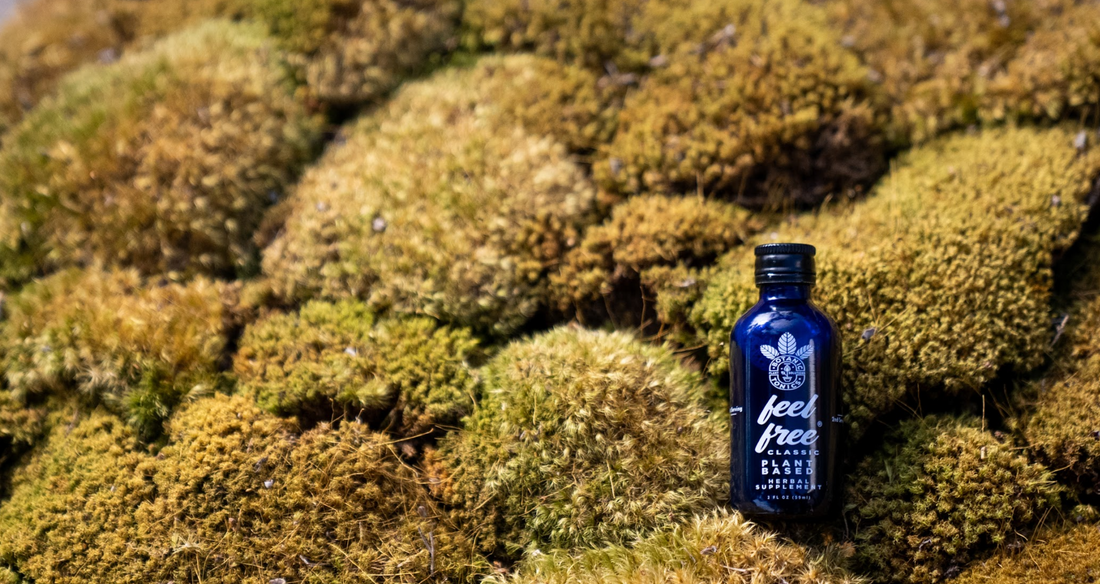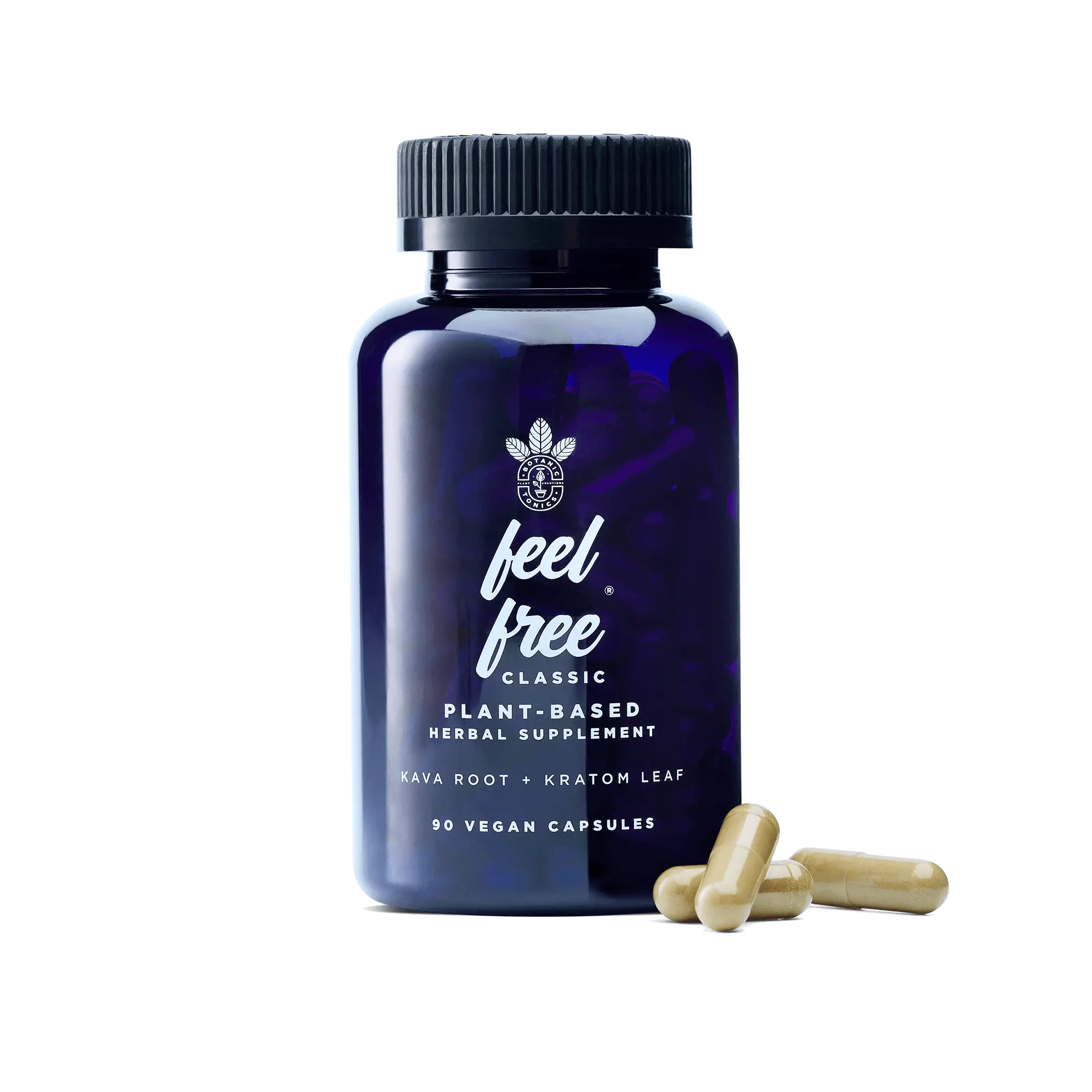If you’re new to the world of kava, you probably have a few questions going through your mind. However, there’s one question that may stick out in particular, especially if you’ve just sipped on a tasty kava tonic: how long does kava take to kick in?
In short, there’s no single answer to this question. Everyone’s experience with drinking kava is slightly different, including how long it’ll take to feel the plant’s soothing and focus-enhancing effects.
That said, we can shed some light on an educated estimate for you. If you’re curious about exploring this supplement, keep reading to learn more about the timeline of consuming kava, including its effects, absorption, and duration.
What Is Kava?

This isn’t your average plant. Kava is a plant-based substance steeped in rich history, culture, and medicinal use—and it’s blooming into a promising future in the modern world.
Dating back thousands of years, the kava plant has roots in the Pacific Island nations, such as Fiji, Vanuatu, Tonga, and Samoa.[1] Historically, kava was harvested from the roots of the Piper tree family and then processed into a drink used recreationally and ceremonially in Pacific Islander socio-cultural events.
Thanks to centuries of cultivation, the world of kava has expanded into modern times. Nowadays, you can consume kava as a tonic, capsule, or extract to experience its incredible benefits.
Types of Kava
All types of kava may come from the Piper tree, but not all Piper trees are the same. In fact, the type of tree can completely change the kava experience, from mental effects to duration.
So, what differentiates the kava plant from certain Piper trees? It comes down to the levels of two compounds in their roots: kavalactones and flavokavains. Kavalactones give the kava tonic its calming and mood-enhancing effects, while flavokavains are responsible for any kava side effects (headaches, dry throat, etc.).[2]
Through agriculture, farmers have created Piper trees with different combinations of these compounds, forming two main types of kava:[3]
- Noble kava – The most popular type of kava, noble kava is sourced from the Piper methysticum tree. In most methysticum trees, the bark contains a higher percentage of kavalactones, which gives its kava a more relaxing and calming effect. Additionally, noble kava is free of flavokavains, so side effects are rarer.
- Tudei kava – Known colloquially as “two-day kava,” Tudei kava comes from the roots of the Piper Wichmannii tree. Typically, Tudei kava has lower levels of kavalactones and higher levels of flavokavains, which makes it stronger in effect (and side effects). The reason for the nickname? The effects of tudei kava can last up to two days.
What Do You Feel When Kava Kicks In?

Behind the cultural mystique lies the science of kava—and that all comes down to its kavalactones.
Kavalactones hold the mysterious power to soothe, calm, and enhance your brain’s activity by interacting with its gamma-aminobutyric acid (GABA) receptors. GABA is a neurotransmitter that promotes relaxation and reduces anxiety, which is why kava often has a calming effect on kava users.[4] In fact, it may work on GABA receptors in a similar manner to some anti-anxiety drugs, making it a potential remedy for such.
So, how does this feel in your body? Like with most substances, everyone has a unique reaction to kava supplements. However, at a suggested kava dosage, it can create any of these sensations:
- Increased calm
- Induced sleepiness
- Enhanced joy or euphoria
- Enhanced focus
- Increased social engagement
Side Effects of Kava
Unfortunately, there is such a thing as “overdoing” kava use. If you take too much kava for your body, you may experience some unwanted side effects.
The recommended kava dose sits at 250 mg or less. However, your body may be sensitive or reactive to a regular dose. Additionally, certain types of kava (such as Tudei) may contain more flavokavains that trigger side effects. In either case, it’s possible to experience these symptoms:[5]
- Numbness or tingling in the throat
- Reduced muscle control
- Intense drowsiness
- Nausea
- Stomach aches
- Headaches
That said, it’s very easy to avoid a kava “overdose.” By starting small and measuring your dose, you can control or even minimize the side effects.
How Does Your Body Absorb Kava?
From lemonade to licorice, every substance you consume makes its way through your body. Kava is no different—but how does your body take in this supplement to reap the mental and physical effects?
To feel those kavalactones, your body takes some intricate steps to break down kava compounds. Once you swallow your kava capsule or sip your kava tea, your body sets into motion:[6,7,8]
- In your stomach – In short, your stomach is the gateway for kavalactones to enter your bloodstream. As kava descends into your stomach, your stomach's gastric acid will break down the kava substance to reveal its kavalactones.
- In your small intestine – From there, the kavalactones enter the small intestine. Kavalactones are lipophilic (they have a strong affinity for fats), which helps them permeate your intestinal lining alongside fat cells, then cross over into your bloodstream.
- In your bloodstream – Now, the kavalactones are ready to take action. Bypassing through your lymph system, the kavalactones enter the bloodstream and make their way to your brain. Once there, they can interact with your GABA receptors to unleash their soothing powers. The kavalactones may also directly enter your muscular tissues, helping your muscles relax.
How Long Does It Take for Kava to Kick In?
It’s the million-dollar question: when will you start feeling the effects of kava? While there is no one-size-fits-all answer, there are some general guidelines.
On average, kava's onset can take anywhere from 15 minutes to 30 minutes after consumption.[9] For most people, the peak effects occur at the 2-hour mark.[10]
Why so much variance? Like with any drug, the onset of kava varies and hinges on multiple factors, including the following:[11]
- Food consumption – Food in your stomach can delay the absorption of kavalactones, as the digestive processes need to work through the meal first. On an empty stomach, however, kava has a quicker route to your bloodstream, since your gastric juices can break down the kavalactones faster. As a result, you may feel the effects sooner.
- Body size – Your body size acts as a conductor in the symphony of kava's onset. Larger individuals might find the effects taking a little longer to manifest, as there's a larger volume for the kavalactones to traverse before they hit the bloodstream. On the flip side, if you're more petite, the effects might make their appearance with a bit more swiftness.
- Personal sensitivity – Just as some people can pick up delicate notes in a dish that others might miss, personal sensitivity varies when it comes to having kava. Some individuals are more attuned to kava's effects and might notice them sooner, while others might require a bit more time for the sensations to become apparent.
- Tolerance – The more your brain does an activity, the more it becomes used to its process. If you're a seasoned kava consumer, your body might be accustomed to the effects, and you might find them kicking in more promptly. However, if you're new to the world of kava, your body might take a little longer to decipher this novel experience.
- Other drugs and medications – Some substances might accelerate or decelerate kava's effects due to their interaction with your body's systems.
- Preparation method – The way kava is prepared sets the stage for its entrance. Traditional methods to prepare kava involving kneading and straining the tree roots into a drink might yield a slower onset, as the kavalactones need more work to be extracted by your body. On the other hand, modern techniques using kava extract or micronized kava root powder might hasten the process, allowing you to experience the effects more swiftly.
How Long Do Kava’s Effects Last?
The duration of kava differs from person to person, just like the onset time. On average, people feel the physical and mental effects anywhere from 4 to 8 hours after kava consumption.[13] However, kavalactones can stay detectable in the body for over 24 hours.[14]
A number of factors can stretch or shorten this period, including any of the following:
- Body size
- Type of kava
- Strength of dosage
- Food consumption
- Other medications or substances
Find Your Kava Balance With feel free

As you sip on a kava tonic, remember that its onset is a multifaceted tale woven from the threads of your body, your surroundings, and your lifestyle. While you can expect certain effects, your kava experience will be unique to you. To find your perfect journey with kava, you’ll need an experienced maker by your side. That’s where we can help.
When you choose Botanic Tonics, you're not just purchasing kava. You're joining a community that values the traditions, science, and nuances of this plant. Our dedicated team sources the finest kava strains from the Pacific Islands, providing transparency to our entire product process.
Whether you’re trying our feel free CLASSIC tonic or taking Kava capsules, you can feel free to give you a quality, balanced experience.
Find your bliss and explore Botanic Tonics today.
Sources:
- Alcohol and Drug Foundation. Kava. https://adf.org.au/drug-facts/kava/
- ScienceDirect. Kavalactones - an overview. https://www.sciencedirect.com/topics/pharmacology-toxicology-and-pharmaceutical-science/kavalactones
- NCCIH. Kava. https://www.nccih.nih.gov/health/kava
- ScienceDirect. Kava - an overview. https://www.sciencedirect.com/topics/nursing-and-health-professions/kava
- UCLA Health. Ask the Doctors - What are the risks and benefits of kava? https://www.uclahealth.org/news/ask-the-doctors-what-are-the-risks-and-benefits-of-kava
- ScienceDirect. Kava - an overview. https://www.sciencedirect.com/topics/nursing-and-health-professions/kava
- Addiction Center. Kava Addiction And Abuse. https://www.addictioncenter.com/drugs/over-the-counter-drugs/kava-addiction-abuse/
- Kava Guides. Kava Duration — How Long Does It Take & How Long Will it Last?
- NSW Ministry of Health. KAVA: the facts. https://yourroom.health.nsw.gov.au/publicationdocuments/Kava-drug-fact-sheets-A4.pdf
- NSW Ministry of Health. KAVA: the facts. https://yourroom.health.nsw.gov.au/publicationdocuments/Kava-drug-fact-sheets-A4.pdf
- NSW Ministry of Health. KAVA: the facts. https://yourroom.health.nsw.gov.au/publicationdocuments/Kava-drug-fact-sheets-A4.pdf
















